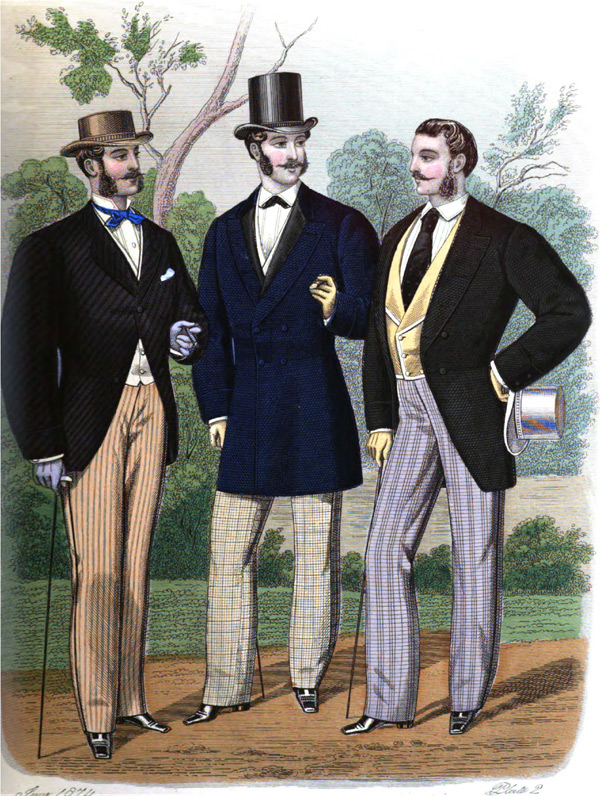Prices and Availability Subject to Change. Please call 800-997-4311 for more Information.
1810s Men's Clothing Guide
In England, the 1810s saw the official Regency for which the whole period 1800-1830 is named. King George III suffered his final illness in 1810 and in 1811 his eldest son George, the Prince of Wales, was appointed Prince Regent to carry out royal duties in his stead, until George III's death in 1820.
The neo-classical influence from the previous decade continued, with arts and culture flourishing under the Regent's oversight, and many fine arts and public works commissioned in this period. English tailoring continued to be a large influence on menswear fashion, with coats made of fine wool and great attention paid to the question of quality and fit.
The ongoing Napoleonic wars had a huge effect on fashions, with the spread of information around Europe and the plenitude of men in military uniform inspiring designs embellished with braid and frogging, or fur from Eastern Europe, for both men and women, the fashion for tall military style boots, "Cossack" trousers and the introduction of the frock coat for men.
In addition to the emergence of the frock coat, which would become the iconic coat of the Victorian era, in this decade we also see the transition from breeches, which had been standard menswear unchanged from the previous century, through pantaloons, to trousers almost as we know them today.
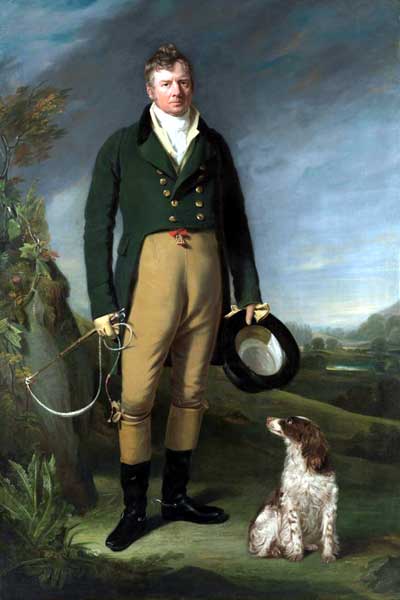
Coats
As in the previous decade, in the 1810s the tailcoat remained the fashionable choice for day and evening wear. Cut in across the waistline, straight or in an inverted U, with the front part of the coat skirt removed, single or double breasted, the tailcoat was tailored in fine quality felted wool, in the muted colors of dark blues, greens and browns as preferred by Beau Brummel. Less formal was the Newmarket, or riding coat, also cut away at the front but sloping more gently from the waist to the tails.
Tall collars with large lapels persisted from the previous decade becoming stiff and more rounded, and the overall silhouette was starting to change; the waistline was lowering and becoming more defined, requiring the addition of a waist seam and darts. Padding was beginning to be added to the shoulder for a more triangular, puffed chest that, while much mocked by onlookers, would become the ideal male shape of the Romantic 1820s.
The end of the 1810s also saw the first appearance of the Redingote - a French adoption of the name "riding coat" but not to be confused with the former. This coat was military inspired, with full, knee-length skirts and a fitted waist, and originally with braid trim and buttoning up to a tall stand collar. In the next decade this coat would come to have the same turned-down collar and lapels as the tailcoat, and was the precursor to that staple of Victorian menswear, the frock coat.
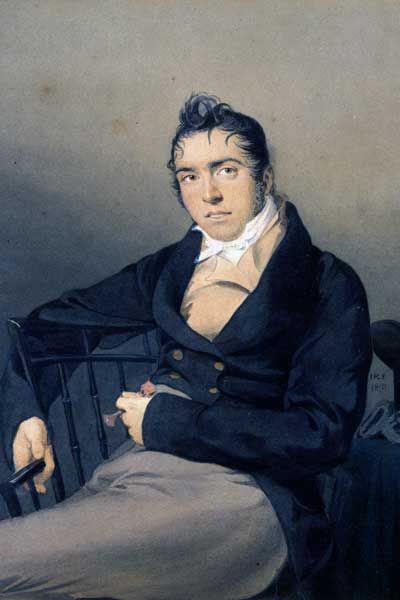

Vests
The vests of the 1810s were similar to the previous decade. Single or double breasted, they were cut straight across, often an inch or so lower than the waist of the tailcoat, so as to show below it. They featured tall stand collars and lapels which stood up around the elaborate neckwear they framed. Never made in the same color as the coat, waistcoats in lighter colors were favored, with white the preferred choice for evening wear. In the daytime, waistcoats were a chance to showcase more colorful fine fabrics, stripes, patterns and embroidery as the rest of menswear became more somber in color.
Shirts
Shirts were made of cotton or linen with wealthier gentlemen having the finest and whitest of fabrics. While plain white was most common, some men wore patterned or striped shirts in bright colors. Collars were very tall, rising up to the chin in order to accommodate the elaborate stocks and cravats that were de rigeur for gentlemen. Shirts were still in the pullover style and many featured decorative ruffles or pleats down the front placket. The distinctive look of one large ruffle can be seen in the 1813 image and shows how vests were worn open to display the decorative shirt.
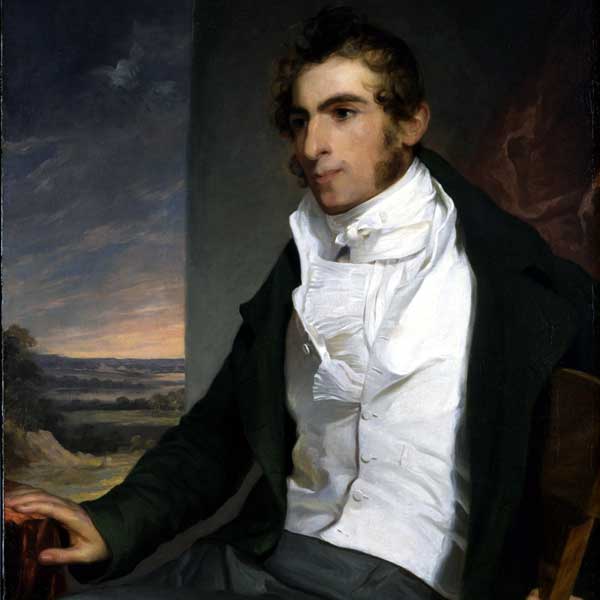
Ties
Neckwear of the Regency period was an elaborate and much discussed feature of a man's wardrobe, with extensive guides written on the subject. As in the 1800s, the main form worn was the cravat, a large square of starched muslin or silk. This could be colored by day but was always white for evening wear.
This could be folded into a multitude of styles to create further volume at the neck, around the chin-height shirt collar and atop the flounces of the shirt front. The cravats became so elaborate that satirists and cartoonists often targeted the dandies for their overzealous pursuit of cravat perfection.
The stock tie continued to grow in popularity. Essentially, these were pre-tied cravats which made them easier to wear and maintain. They were originally used by soldiers for both warmth and protection, but for those lacking the help of a valet and the means to have dozens of cravats to use in attempting to tie the perfect knot, they were an easy alternative.
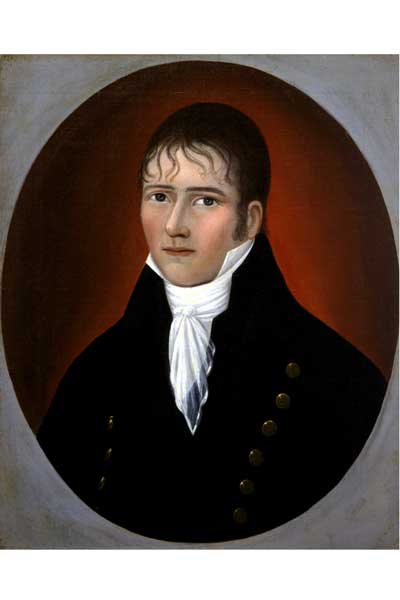
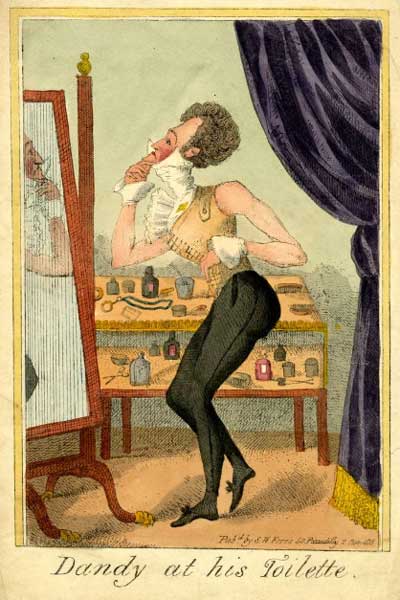
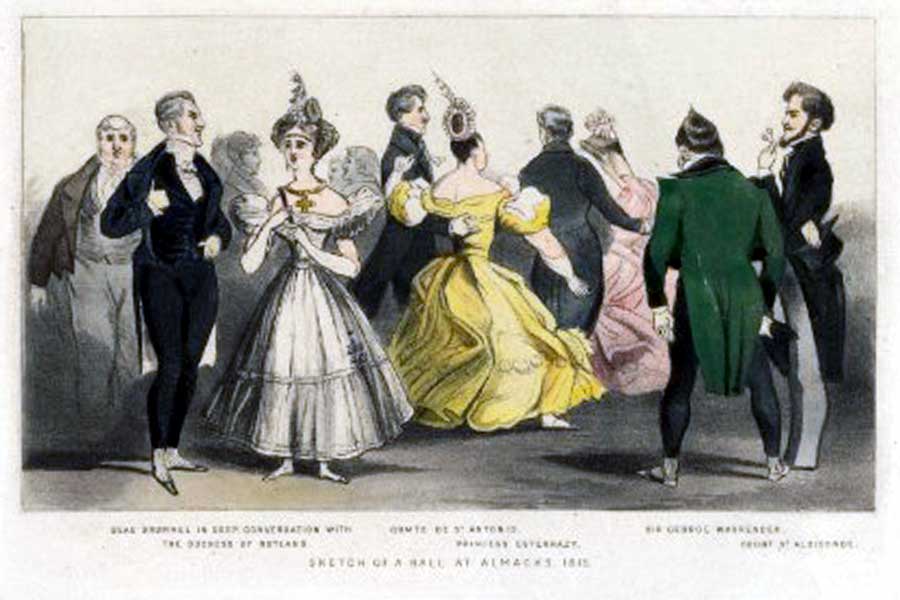
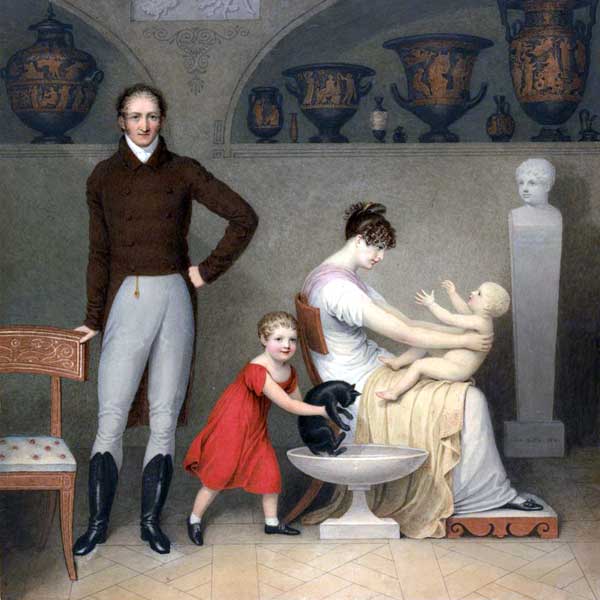
Pants
Breeches were still being worn in the 1810s, certainly in white or cream for formal evening dress when they were paired with white stockings and black leather dress pumps, a dark blue or black tailcoat, and light colored waistcoat.
More fashionable in this period however were pantaloons, extending to the calf first with buttons or ties at the opening, then later the ankle and held in place with a strap under the instep. Both breeches and pantaloons were often made of fine wool cut on the bias so as to be very fitted, almost like tights. Tucking breeches or pantaloons into tall military-style Hessian or Wellington boots was the height of fashion in the 1810s. Light colors were in vogue for day, but Beau Brummell was noted to have favored black pantaloons for evening, worn with silk stockings and dress pumps.
Finally trousers, worn informally, by children and as sailor's uniforms since the beginning of the century, were beginning to gain popularity as daywear. Still slim, but looser around the calf than pantaloons, they could also be worn tucked into boots.
Rather than the single opening of modern day, all Regency pants had a flap panel 5-8 inches wide called a fall that opened in the front and fastened with buttons, the single button fly not in common use until around 1840.
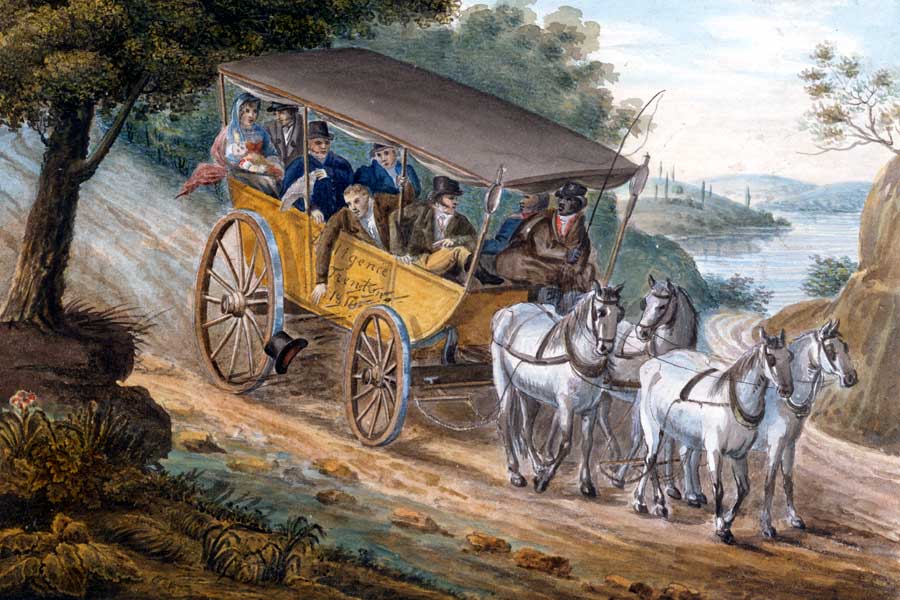
Hats
The top hat continued to be the fashionable hat of choice for men of the 1810s, as it would for many decades after. In this period top hats were still seen in a variety of shapes and colors, and were predominantly made from wool felt or beaver pelt. The bicorne of the 18th century remained fashionable for evening wear, some were designed to collapse to be tucked under the arm and were called chapeau-bras. Many other types of hat are seen on working men; soft felt hats with shorter crowns and wider brims, caps, with and without peaks.
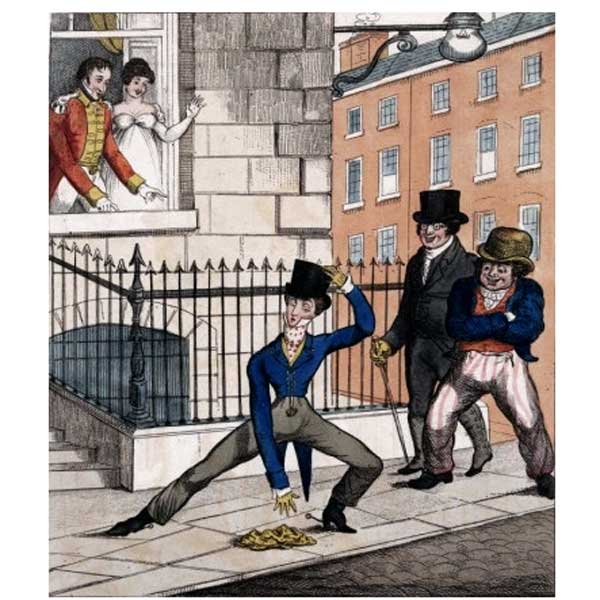
Footwear
The uniforms of the Napoleonic Wars (1803-1815) inspired a military theme in civilian clothing too, with the new tightly fitting breeches and pantaloons tucked into either a Hessian boot, which were knee height and often featured a decorative tassel, or the square-toed and lower-cut Wellington, named for the British duke and General. Wellingtons continued to be worn into the 1840s as they could be worn underneath the newly fashionable trousers.
For evening, black leather dress pumps were worn, fastened with ribbons tied into neat bows.
Working men are often depicted wearing gaiters to protect their shoes and stockings, which they wear with breeches, rather than the more fashionable pantaloon and boot.
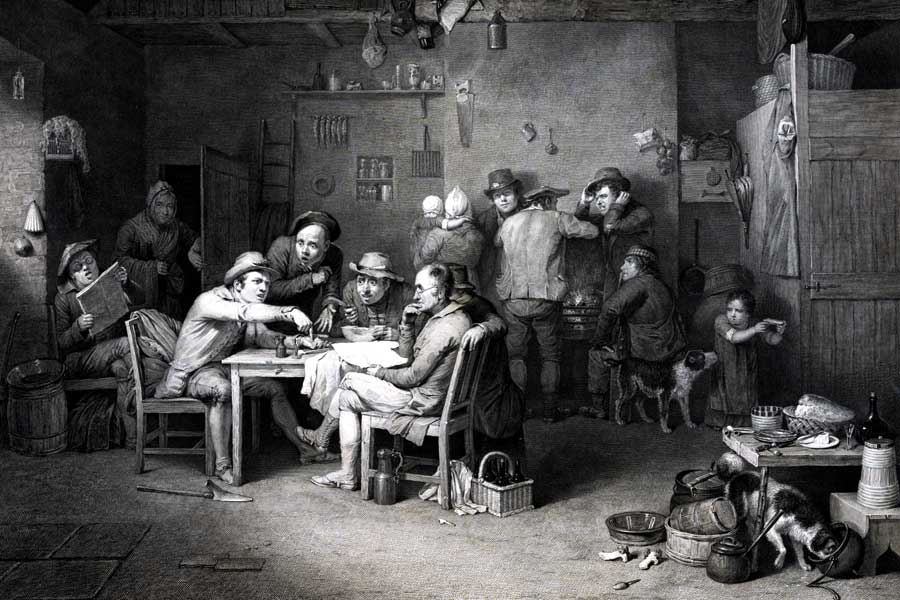
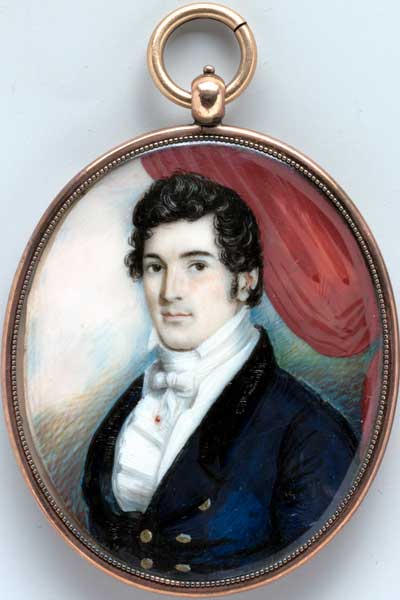
Hair & Accessories
Men's hairstyles continued to be cut short and left natural. Classically inspired, like much of the fashion of the time, these hairstyles had names like a la Titus or Brutus. A gentleman would also wear a watch, tucked into a pocket in the breeches, with seals and fobs hanging from the chain attached to the waist and visible below the waistcoat.
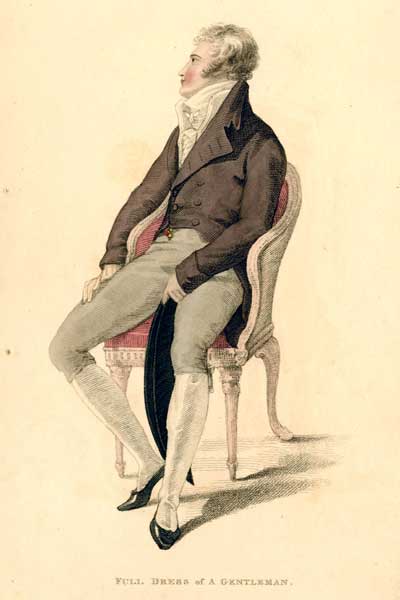
Q&A About 1810s Men's Fashion
What did men wear in the 1810s?
What did upper class men wear in the 1810s?
What did lower class men wear in the 1810s?

Complete Regency Outfits
We offer a full line of men's period clothing which are suitable for movie and TV production, theatrical, living history and performing arts requirements, and are also perfect for vintage weddings!
All of the products we sell are sold individually, but we have put together these full outfits to showcase the elements of Regency style for your consideration and inspiration.
Click any image for a close-up and a list of the products shown.



